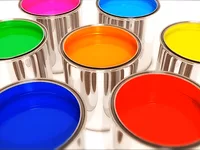Maintaining the Perfect Temperature for Epoxy Curing
The wonders of epoxy are clear to those who deal with it on a regular basis. The strength of its bounding characteristics, and the nice, durable sheen it leaves as a coating, and the flexibility it offers for varying applications, make epoxy a truly amazing compound.
Yet amid all benefits of epoxy resins, there is the unavoidable fact that epoxy isn’t easy to work with. The primary reason that epoxy application can be so challenging is simply because so many epoxies cure at temperatures above the ambient air. This is why understanding the characteristics of epoxy and how it cures is important.
What is Epoxy?
Epoxy is simple enough; it is made of a chemical reaction between epoxide resins and hardening agents. These resins react in a way that creates a strong adhesive bond, a sort of super glue in a sense. In turn, this epoxy adhesive can be applied to a large range of products and materials including cars, boats, countertops, flooring and more.
It’s helpful to think of epoxy as a two-part substance. First, it can be utilized as a way to bond objects together in an extremely tight and secure manner, such as in carbon-fiber and glass-fiber construction. Second, epoxy can be applied to many types of surfaces as a coating to defend against unwanted stains, scratches or corrosion. For example, it can be added onto a garage floor to create a neat, uniform surface that will be protected from automobile oil. Epoxy coatings are also used in many commercial flooring applications.
Epoxy Curing
Though epoxy acts as a vital element of industrial and commercial bonding and coating, it must first undergo a process of curing. As noted previously, epoxy only gets its practical use from a chemical reaction. This reaction takes time and requires specific conditions to produce the desired result. Epoxy curing can be achieved only through a variety of factors, including proper preparation of the material upon which the epoxy lies, dryness (in most conditions), uniform application of the epoxy, proper mixing of the epoxy and warm temperatures.
Why Warm Temperatures?
Perhaps the most important prerequisite for epoxy to cure properly is a warm temperature—a heat above room temperature. This may sound easy, and it might be, under conditions of minimal variances above room temperature; bu in the case of most epoxies, the proper curing range is well above room temperature. This means that curing processes often involve heatboxes or large ovens in order to achieve and maintain the ideal temperature. These boxes and oven can be costly and time consuming.
Typical Ways to Raise the Temperature for Epoxy Curing
When curing epoxy, you need to apply a constant, specific temperature to the localized region of epoxy. Some common (and less-than-ideal) ways that large companies or residential home-owners employ to do this include:
- Containing the epoxy in a room and adding hot air,
- Using a thermostat-controlled heatbox,
- Storing epoxy materials in a warm area on a hot day, and
- Submerging the epoxy under hot water.
While these methods may speed up the curing process, they can cause the epoxy to become fragile, brittle or weak in its hardened state. The best bet is a controlled source of heat that is easily applied and that can save money in the long run.
The Best Solution to Raising the Heat
When other sources of heating just won’t do, the innovative technology of heating blankets is a good solution. Turning to the power of heating blankets can provide the safest and most efficient way to keep epoxy curing as it should.
Unlike using hot water (which eventually loses its heat) and unlike the expensive and time-consuming system of room heating, heating blankets provide uniform, controlled heat exactly where it’s most needed. Heating blankets can be easily placed on or around the area that demands the most attention.
Heating blankets not only help facilitate epoxy curing; they can also be used to store epoxy and other material, such as paint, in warm, stable temperatures during colder weather and the freezing winter months.
Heating Blankets and Their Influence on the Industry
Manufacturers usually offer blankets, both for curing and storage, in a variety of sizes. These different sizes make epoxy curing and storage an efficient process. The unique combination of high-quality design and controlled heat make heating blankets a superior method of heating and safeguarding epoxy.
In addition to this, some heating blanket companies can offer custom builds and designs to craft the blanket to fit specific parameters and needs.
What makes heating blankets unique is that they save businesses huge amounts of potential downtime and hassle. Imagine the trouble of epoxy stored in a freezing garage. Without the proper temperature, the epoxy will be in danger of being unusable. With heating blankets, problems like this can be averted and businesses can save money in the long term. What’s more as it applies to curing, well, you can save a lot of money and downtime by eliminating the need for large ovens, heated rooms, or heatboxes.
The Powerblanket Solution
For the past 10 years, Powerblanket has delivered heating solutions to a number of industries that require careful attention to temperature-sensitive fluids and materials. Powerblanket uses patented GreenHeat Technology, which provides even and efficient heat distribution across the entire area of application.
Powerblanket features include patented energy-efficient heating, heating blankets designed to cover customized needs, prompt delivery time for custom orders (14 days or less), and absolute heat control to avoid overheating the product.
Looking for a reprint of this article?
From high-res PDFs to custom plaques, order your copy today!








